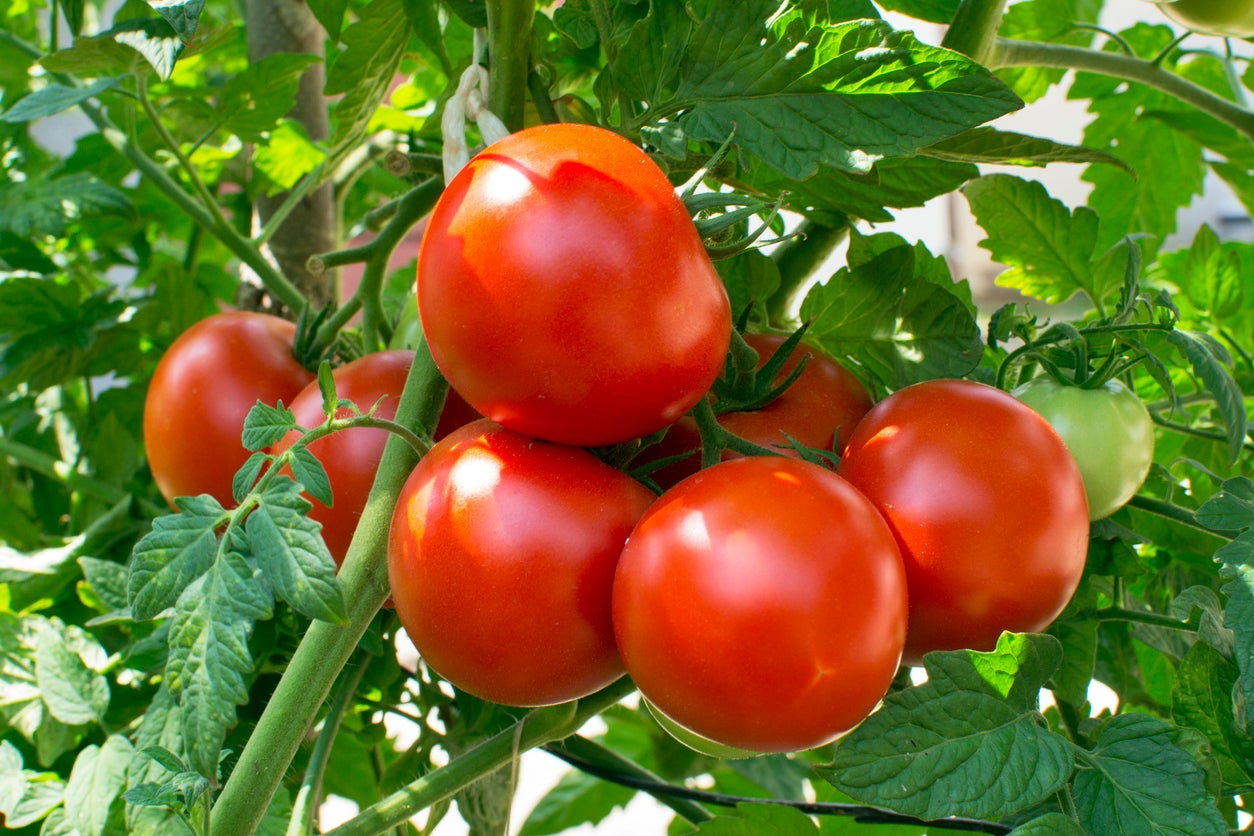Heat Tolerant Tomato Plants – Tomato Growing Tips For South Central States


Vegetable gardeners in Texas, Oklahoma, Arkansas, and Louisiana are quick to share their tomato growing tips they learned from the School of Hard Knocks. Experience teaches them which varieties are best in the heat, when to start tomato transplants, how often to water, when to fertilize and what to do about pests and diseases. Keep reading to learn more about tomato growing in southern regions like this.
Southern Tomato Gardening
Successful tomato growing in southern regions depends a lot on the weather. They have a short season for growing tomatoes – from last frost to heat of summer. Once temperatures reach 85 degrees F. (29 C.) during the day and mid 70's (21 C.) at night, tomato plants will start aborting the flowers.
To combat the short season, it’s recommended that gardeners start their seeds earlier than usual, at about 10 weeks before the last average frost date. Then as the transplants grow indoors, transfer them into increasingly larger containers. When it is time to plant outside, gardeners should have gallon-pot-size tomatoes ready to bear fruit.
Alternatively, buy transplants early from eager garden centers and keep them growing indoors till last frost date arrives.
Soil Preparation
Always buy varieties with disease resistance. In a short growing season, the less disease to deal with, the better.
Before planting outside, it’s very important to have your site prepared. It should be in full sun, at least six hours a day, with good drainage and well amended soil. If possible, obtain a soil test from the local cooperative extension group and correct any deficiencies. The pH should be between 5.8 and 7.2. Soil temperature should be above 60 degrees F. (16 C.).
If the drainage is less than ideal, raised beds will work or mound up the soil 6 to 8 inches (15-20 cm.). Place transplants deeper into the soil than they were in the pot, close to lower leaves. If transplant is spindly, lay the lower part on its side beneath the soil. Add a tomato cage or spike to support the plant and fruit.
Sign up for the Gardening Know How newsletter today and receive a free copy of our e-book "How to Grow Delicious Tomatoes".
Mulch plants with organic material such as hay, compost, or leaves to reduce weeds, improve moisture retention and eliminate crusting of soil.
Water and Fertilizer
Consistent and ample watering of one inch a week (2.5 cm.) can help prevent cracking and blossom end rot. Water every two to four days to keep soil moist but not soggy. Using a soaker hose or drip irrigation system will help prevent foliar diseases brought on by overhead watering.
Tomatoes are heavy feeders so plan to fertilize several times till plants mature. Start at planting time with 1 to 2 pounds (0.5-1 kg.) of 10-20-10 garden fertilizer per 100 square feet (9.29 sq. m.) or 1 tablespoon (15 ml.) per plant. When the first fruits are one-third grown, side dress with 3 pounds (1 kg.) per 100 foot (30.5 m.) rows or 2 tablespoons (30 ml.) per plant. Apply the second application two weeks after first ripe fruit and again one month later. Carefully work fertilizer into soil then water well.
Pests and Diseases
Prevention is the best medicine when it comes to pest and disease control. Be certain plants have adequate spacing for good air circulation. Examine the plants at least once a week to look for signs of pests or disease. Catching them early is the best defense.
Copper sprays can ward off several fungal and bacterial diseases such as septoria leaf spot, bacterial spot, anthracnose, and gray leaf mold.
Reduce the numbers of mites and aphids by aiming a spray of water toward the leaves from beneath the foliage. Insecticidal soap can also be used on aphids as well as young caterpillars. Stink bugs can be knocked into a bucket of soapy water.
Be aware of diseases to watch out for that can be identified with an online fact sheet from your states’ university extension service.
Choosing Tomatoes in Texas And Surrounding States
Due to the short season, it is recommended to buy small to medium size transplants and those that have shorter days to mature. The larger sized tomatoes will take a longer time to grow. By choosing determinate tomatoes, which produce an abundance of tomatoes in one harvest, you will be finished tomato gardening before the dog days of summer. If you want tomatoes all summer, also plant indeterminate varieties, which produce till frost.
Recommended varieties include Celebrity (determinate) and Better Boy (indeterminate) for red fruit. For containers, Lizzano matures in 50 days. For small fruits, Super Sweet 100 and Juliette are dependable.
New heat tolerant tomato plants that set fruit above 90 degrees F. (32 C.) arrive every year, so it’s best to consult the local garden center or extension office for the latest hybrids. You should still find these heat tolerant varieties available:

After graduating from Oklahoma State University with a degree in English, Susan pursued a career in communications. In addition, she wrote garden articles for magazines and authored a newspaper gardening column for many years. She contributed South-Central regional gardening columns for four years to Lowes.com. While living in Oklahoma, she served as a master gardener for 17 years.